As a plumbing expert, I understand the importance of using the right tools and materials to ensure a successful plumbing job. One such material that is essential in any plumber’s toolkit is plumber’s tape, also known as Teflon tape or thread seal tape. Plumber’s tape is a thin, white tape made of polytetrafluoroethylene (PTFE) that is used to provide a tight seal between threaded pipe joints and prevent leaks.
Using plumber’s tape may seem like a simple task, but it requires proper technique and attention to detail. In this article, I will guide you through how to use plumber’s tape correctly, including when and where to use it, how to apply it, and common mistakes to avoid. With this knowledge, you will be able to confidently tackle any plumbing project that requires the use of plumber’s tape and ensure your work is leak-free for years to come.
What Is Plumber’s Tape?
Plumber’s tape is a versatile tool for any plumbing job. This thin, flexible tape is made of polytetrafluoroethylene (PTFE), a material that can withstand high temperatures and pressure. Plumber’s tape is commonly used to seal threaded connections between pipes and fittings, preventing leaks that can cause damage to homes and buildings.
One of the benefits of using plumber’s tape is its ease of use. Simply wrap the tape around the threads in a clockwise direction and it will create a tight seal as you tighten the fittings together. Plumber’s tape is also affordable and readily available at most hardware stores.
Despite its many benefits, there are some common misconceptions about plumber’s tape. Many people believe that plumber’s tape should be wrapped around the entire length of the pipe, but this is not necessary. Only wrapping the threads will provide sufficient sealing without wasting excess materials. Additionally, some people think that plumber’s tape can fix leaks after they have already occurred, but this is not true. Plumber’s tape should only be used as a preventative measure to avoid leaks from happening in the first place.
Plumber’s tape may seem like a small detail in plumbing work, but it plays an essential role in ensuring the integrity of pipes and fittings. In the next section, we will discuss why plumber’s tape is important for any plumbing job and how it can save you time and money in the long run.
Why Is Plumber’s Tape Important?
Plumber’s tape is a crucial component in plumbing jobs, whether it is done by professionals or DIY enthusiasts. It is a thin, white tape that is wrapped around pipe threads before connecting them to ensure a leak-free seal. Without plumber’s tape, water can seep through the gaps between the threads and cause damage to the surrounding area.
The importance of using plumber’s tape cannot be overstated. Not only does it prevent leaks and water damage, but it also helps to extend the lifespan of pipes and fittings. By creating a secure seal between thread connections, it reduces wear and tear on the threads themselves. This means that your plumbing system will function more efficiently and require fewer repairs in the long run.
In addition to its benefits in professional plumbing jobs, plumber’s tape can also be useful for DIY projects around the house. It can be used to seal air leaks in ductwork or prevent rust on metal surfaces. Its versatility makes it an essential item to have in any toolbox.
- Plumber’s tape is easy to use and affordable
- It can help prevent costly water damage
- Using plumber’s tape can extend the lifespan of your plumbing system
With all of these benefits, there is no reason not to use plumber’s tape in your next plumbing project or DIY endeavor. In the following section, we will discuss different types of plumber’s tape and which ones are best suited for different applications.
Types Of Plumber’s Tape
When it comes to choosing the right type of plumber’s tape for your project, it is important to consider the pros and cons of each option. There are three main types of plumber’s tape: PTFE (polytetrafluoroethylene) tape, silicone tape, and fiberglass tape. Each type has its own unique characteristics that make it suitable for certain applications.
PTFE tape, also known as Teflon tape, is the most commonly used type of plumber’s tape. It is easy to use and effective in sealing pipe threads against leaks. However, it can only be used on metal pipes and fittings, as it can break down when exposed to certain chemicals. Silicone tape is a more versatile option that can be used on both metal and plastic pipes. It is also resistant to chemicals and extreme temperatures. However, it may not provide as tight of a seal as PTFE tape. Fiberglass tape is the strongest type of plumber’s tape and can withstand high pressures and temperatures. However, it is not suitable for all types of pipes and fittings.
When deciding whether to use plumber’s tape or an alternative plumbing sealant like pipe dope or Teflon paste, it is important to consider the specific application. Plumber’s tape works best for sealing pipe threads against leaks but may not be necessary or effective for other types of connections. Pipe dope can provide a stronger seal than plumber’s tape but may take longer to dry before the connection can be pressurized. Teflon paste is similar to pipe dope but may be easier to apply in hard-to-reach areas.
Understanding the different types of plumber’s tape available and their pros and cons can help you choose the right one for your project. In the next section, we will discuss when it is appropriate to use plumber’s tape versus alternative plumbing sealants based on specific applications.
When To Use Plumber’s Tape
Plumber’s tape, also known as Teflon tape or thread seal tape, is a go-to solution for sealing pipe threads in plumbing applications. It is a versatile and affordable tool that can help prevent leaks, but it is important to know when to use it and how to apply it properly.
Pros and cons of using plumber’s tape should be considered before its application. On the one hand, this type of tape is easy to use and inexpensive. It can be used on a variety of materials such as copper, PVC, brass, and steel. On the other hand, if not applied correctly or overused, the excess tape may break off and clog valves or fixtures.
Proper technique for applying plumber’s tape involves wrapping the tape clockwise around the pipe threads three to five times until they are completely covered. The wrap should be snug but not too tight because overtightening can cause the threads to crack. It is essential not to overlap the ends of the tape since this will lead to leakage instead of proper sealing.
To ensure that plumber’s tape is used effectively, follow these four tips:
- Choose the right size and thickness of the tape for your specific job.
- Clean all dirt and debris from the threads before applying.
- Avoid touching the adhesive side of the tape with your fingers.
- Tighten fittings just enough so they are snug without over-tightening them.
Knowing how to use plumber’s tape correctly is crucial for anyone who wants to tackle plumbing projects on their own. The next section will discuss where plumber’s tape can be used effectively in plumbing applications.
Where To Use Plumber’s Tape
After learning about when to use plumber’s tape, it is important to understand the different types of tape available. The most common type of plumber’s tape is made from PTFE (polytetrafluoroethylene), also known as Teflon. This type of tape is white and thin, making it easy to wrap around threads without adding bulk. However, there are also thicker and colored tapes available for specific applications.
It is important to note that plumber’s tape is not always necessary. For example, if a joint has rubber gaskets or O-rings, they may provide enough sealing without using tape. Additionally, some pipe fittings have built-in sealing features like grooves or flared ends that do not require additional sealing with tape. It is important to properly evaluate each situation before deciding whether or not to use plumber’s tape.
In summary, different types of plumber’s tape are available for various applications, but it is crucial to determine whether or not it is necessary for the specific joint being worked on. By understanding when and where to use plumber’s tape, plumbers can ensure proper installation and prevent leaks in their plumbing systems.
Transition: To properly prepare the pipe before using plumber’s tape, there are a few key steps that must be taken.
How To Prepare The Pipe For Plumber’s Tape
The first step in using plumber’s tape is to clean the pipe properly. Pipe cleaning is a crucial part of the process as it ensures that the tape will adhere correctly to the pipe, and there will be no leaks. To clean the pipe, use a piece of sandpaper or emery cloth to remove any dirt, grease or rust from the surface. Make sure to wipe away any debris before proceeding.
Once you have cleaned the pipe, it is essential to choose the right thickness of plumber’s tape. The tape comes in different sizes, so you need to select one that matches your pipe’s diameter accurately. If you use a tape that is too thick or thin, it may not seal properly, resulting in leaks.
Proper preparation of the pipe for plumber’s tape is vital in ensuring its effectiveness. Remember to clean your pipes thoroughly and choose the right thickness of tape for your job. Once you have completed these steps, you are ready to move on to how to apply plumber’s tape effectively.
How To Apply Plumber’s Tape
To effectively apply plumber’s tape, one must first understand the proper technique. Start by cleaning the threads of the pipe or fitting that you will be sealing with a clean cloth to remove any dirt or residue. Next, hold the end of the tape against the threads and wrap it around in a clockwise direction. Make sure to overlap each layer slightly to ensure a tight seal.
Common mistakes when applying plumber’s tape include using too much tape or wrapping it in the wrong direction. Using too much tape can cause leaks or make it difficult to screw on fittings properly. Wrapping the tape in the wrong direction can also result in leaks as it will not create a tight seal.
Remember that applying plumber’s tape is just one step in ensuring a leak-free connection. It is important to use proper techniques and take additional precautions such as checking for damaged threads or using joint compound for added protection. By following these guidelines, you can ensure a successful application of plumber’s tape and prevent costly leaks.
Moving forward, let us explore some tips for applying plumber’s tape that can further enhance your plumbing skills and knowledge.
Tips For Applying Plumber’s Tape
According to a survey conducted by the Plumbing Manufacturers International, 82% of homeowners have experienced some form of plumbing issue in their homes. This highlights the importance of having basic knowledge on how to apply plumber’s tape. Applying plumber’s tape is a simple process that can save you from costly repairs and water damage.
When applying plumber’s tape, there are several techniques that you can use to ensure that it sticks properly. Firstly, make sure that the surface is clean and dry before applying the tape. This will help to prevent any debris or moisture from interfering with the adhesion of the tape. Secondly, apply the tape in a clockwise direction while pulling it tightly as you wrap it around the pipe. Lastly, ensure that you do not overlap or leave gaps when wrapping the tape around the pipe.
Common mistakes made when applying plumber’s tape include using too much tape or not enough tape. Using too much tape can cause leaks and blockages in your pipes while using too little may result in insufficient sealing. Therefore, it is important to know how much plumber’s tape to use for different pipe sizes. In general, one full wrap of plumber’s tape should be enough for smaller pipes while larger pipes may require two or three wraps.
Knowing how much plumber’s tape to use can save you time and money in fixing plumbing issues caused by leaks and blockages. By following proper application techniques and avoiding common mistakes, you can ensure that your pipes remain leak-free and functioning properly for years to come.
How Much Plumber’s Tape To Use
When using plumber’s tape, it is important to wrap the required amount of tape around the threads of the fitting in order to create a secure seal. Generally, it is recommended to wrap the tape two to three times around the threads for a standard fitting. The amount of tape to cut off should be approximately three inches in length, enough to allow for the tape to be wrapped around the threads multiple times. When using plumber’s tape, it is important to ensure that the tape is wrapped around the threads in the same direction as the fitting’s threads.
How Much To Wrap
Plumber’s tape is a versatile tool that can be used to seal leaks in pipes and fittings. One of the most important things to consider when using plumber’s tape is how much to wrap around the pipe or fitting. Proper wrapping techniques are crucial for ensuring a leak-free seal, so it’s important to measure the amount of tape needed before starting.
To determine how much plumber’s tape to use, start by measuring the circumference of the pipe or fitting you’ll be working with. This can be done using a measuring tape or by simply wrapping a length of string around the pipe and measuring it afterwards. Once you have this measurement, add an additional half inch to ensure proper coverage.
When wrapping plumber’s tape around a pipe or fitting, it’s important to apply even pressure and make sure the tape overlaps itself slightly with each pass. Too little tape will result in an incomplete seal, while too much can cause problems with fittings not screwing on properly. By following these simple steps, anyone can successfully use plumber’s tape to seal leaks and prevent costly plumbing repairs down the road.
How Much To Cut
When working with plumber’s tape, it is important to consider not only how much tape to use, but also how much to cut. Proper cutting techniques are crucial for ensuring that the tape fits snugly around pipes and fittings, preventing leaks and other plumbing issues. To determine the required length of tape, measure the circumference of the pipe or fitting as previously mentioned.
Once you have determined the required length of tape, it is time to cut it from the roll. A common mistake is to tear or rip the tape from the roll, which can result in an uneven edge that may not provide a proper seal. Instead, use a sharp pair of scissors or a utility knife to make a clean cut. Be sure to hold the tape tightly against a flat surface while cutting to prevent it from unraveling or becoming misshapen.
Finally, when wrapping plumber’s tape around pipes and fittings, be sure to apply even pressure and overlap each pass slightly. Cutting the tape properly ensures that it fits snugly without excess material that can cause problems with fittings not screwing on properly. With these simple tips in mind, anyone can successfully use plumber’s tape for leak-free plumbing repairs.
How To Avoid Common Mistakes
Successful application of plumber’s tape is essential for preventing leaks in plumbing systems. However, common mistakes can be costly and time-consuming to fix. To avoid these pitfalls, it’s important to understand the proper techniques for using plumber’s tape.
One mistake people make when applying plumber’s tape is using too little or too much. Not using enough tape can result in leaks while using too much can cause problems with fitting connections. It’s important to apply enough pressure while wrapping the threads to ensure a tight seal without overdoing it.
Another common mistake is applying the tape in the wrong direction. Plumber’s tape should always be wrapped clockwise around the threads to ensure that it tightens as you screw on the fitting. Wrapping counterclockwise will cause the tape to unravel and not provide an effective seal.
To successfully apply plumber’s tape, follow these tips:
- Use enough tape but don’t overdo it.
- Always wrap clockwise around the threads.
- Apply firm pressure while wrapping to create a tight seal.
By avoiding common mistakes and following these tips, you can effectively use plumber’s tape and prevent leaks in your plumbing system. The next step is checking for leaks, which we will discuss in the subsequent section.
How To Check For Leaks
When it comes to plumbing, leaks can be a common problem. It is important to check for leaks regularly, especially if you suspect that there may be an issue with your pipes or fixtures. One way to do this is by examining the area around your plumbing and looking for signs of water damage or moisture. If you notice any signs of a leak, it is important to take action right away in order to prevent further damage.
One effective method for preventing leaks is by using plumber’s tape. This tape is designed to create a tight seal around pipe threads and fittings, which can help prevent water from leaking out. When using plumber’s tape, it is important to ensure that you are using the proper type of tape for your specific application. There are different types of plumber’s tape available on the market, so it is important to do your research before making a purchase.
To use plumber’s tape effectively, start by cleaning the area around the pipe threads or fitting thoroughly. Then, wrap the tape around the threads in a clockwise direction, ensuring that each wrap slightly overlaps the previous one. Be careful not to wrap too tightly or too loosely – you want the tape to create a tight seal without causing damage to the fittings or threads. Once you have wrapped the tape around several times, trim off any excess and press down firmly to ensure that the tape adheres properly. With proper use of plumber’s tape, you can help prevent leaks and keep your plumbing system working efficiently.
Moving forward into our next section: How long does plumber’s tape last?
How Long Does Plumber’s Tape Last?
Plumber’s tape, also known as thread seal tape or PTFE tape, is a polytetrafluoroethylene (PTFE) film which is used to seal threaded pipe fittings. It is generally accepted that plumber’s tape has a very long lifespan when installed correctly, often lasting for several years. However, the actual longevity of plumber’s tape can be affected by several factors, such as weather, temperature, water pressure, and the type of tape used. Regular maintenance of plumber’s tape is important in order to ensure its longevity, including making sure the tape is properly installed and checking for signs of wear and tear. Additionally, if the tape is used in an area where temperatures are extreme or where water pressure is high, it should be checked more frequently to ensure that it is not damaged and is adequately sealed.
Longevity Of Plumber’s Tape
As a plumbing expert, I understand the importance of using plumber’s tape for a leak-free seal. The longevity of plumber’s tape is a crucial aspect to consider when choosing the right tape for your plumbing needs. The benefits of longevity are numerous, including cost savings and time efficiency.
Factors affecting the longevity of plumber’s tape include the material it is made from, the type of application it is used for, and how well it is applied. The most common types of plumber’s tape are made from PTFE or Teflon, which can last up to 10 years in ideal conditions. However, if the tape is exposed to extreme temperatures or chemicals, its lifespan can be significantly reduced.
To ensure maximum longevity of plumber’s tape, it should be stored in a cool and dry place away from direct sunlight. Additionally, proper installation techniques should be followed to prevent over-stretching or tearing of the tape. By taking these precautions and considering factors affecting longevity, you can ensure that your plumbing system remains leak-free for years to come.
Factors Affecting Longevity
As a plumbing expert, it is crucial to understand the various factors affecting the longevity of plumber’s tape. One of the most significant factors is the material from which it is made. The most common types of plumber’s tape are PTFE or Teflon, which can last up to a decade in ideal conditions. However, if exposed to extreme temperatures or chemicals, its lifespan may be significantly reduced.
Another factor affecting the longevity of plumber’s tape is how well it is applied. Proper installation techniques must be followed to prevent over-stretching or tearing of the tape. It must also be stored in a cool and dry place away from direct sunlight to prevent premature deterioration. Failure to follow these best practices for storage and maintenance may result in reduced effectiveness or even complete failure.
To ensure maximum longevity of plumber’s tape, plumbers must take into account all factors that may affect its lifespan. Proper installation techniques and storage practices can prolong its effectiveness for up to 10 years or more. By considering these factors and taking necessary precautions, plumbers can provide long-lasting leak-free solutions for their clients’ plumbing needs.
Maintenance Of Plumber’s Tape
Maintenance of plumber’s tape is crucial to ensure its maximum effectiveness and longevity. Even the best quality plumber’s tape can fail prematurely if not maintained properly. Common mistakes in maintaining plumber’s tape include leaving it exposed to direct sunlight or extreme temperatures, which can cause it to deteriorate or lose its adhesive properties. Another mistake is failing to store it in a cool and dry place away from chemicals that may damage the material.
To avoid these common mistakes, plumbers should follow best practices for maintaining plumber’s tape. This includes storing it in a cool and dry place, away from direct sunlight or heat sources. It should also be kept away from chemicals that may corrode or degrade the material. Proper storage can significantly extend the lifespan of plumber’s tape, ensuring its effectiveness for years to come.
In addition to proper storage, regular inspection of plumber’s tape is essential to maintain its effectiveness. Over time, the material may become brittle or lose its adhesive properties, resulting in leaks or other plumbing issues. Regular inspection can help identify any signs of deterioration or wear and tear before it becomes a major issue. By following these best practices for maintenance and inspection, plumbers can ensure their clients receive long-lasting leak-free solutions for their plumbing needs.
Can Plumber’s Tape Be Reused?
After learning about the lifespan of plumber’s tape, you may be wondering if it can be reused. The short answer is no, plumber’s tape cannot be reused. Once it has been applied and removed, the tape loses its adhesive properties and will not effectively seal again.
It is important to properly dispose of used plumber’s tape. Simply throwing it in the trash can lead to environmental pollution and harm to wildlife. Instead, wrap the used tape around a piece of cardboard or paper before disposing of it in the trash. This will help prevent it from sticking to other materials or causing damage in landfills.
In addition to proper disposal, there are alternatives to using plumber’s tape for sealing pipes. These include pipe dope, thread sealant paste, and compression fittings. Each alternative has its own benefits and drawbacks, so it is important to research and choose the best option for your specific plumbing needs.
Alternatives To Plumber’s Tape
As a plumbing expert, it’s always amusing to see people rely solely on plumber’s tape for their DIY plumbing fixes. Don’t get me wrong, plumber’s tape is an essential tool in any plumber’s arsenal, but it shouldn’t be the only option you consider. With the rise of eco-friendly plumbing solutions, there are now alternatives to traditional plumber’s tape that can save you money and reduce your environmental impact.
One such alternative is using hemp twine coated with beeswax. Not only is this method eco-friendly, but it also provides a tight seal that lasts longer than traditional plumber’s tape. Another option is using PTFE-free Teflon tape made from high-density polymer foam. This type of tape doesn’t contain any harmful chemicals and can be safely used on all types of pipes.
By exploring these alternative options, you can not only improve the longevity of your plumbing fixtures but also make a conscious effort to reduce your environmental impact. So next time you’re faced with a plumbing issue, consider these eco-friendly alternatives before reaching for the traditional plumber’s tape.
In conclusion, while plumber’s tape is a reliable tool for sealing pipes and preventing leaks, there are now eco-friendly alternatives available that can provide even better results. By incorporating these methods into your DIY plumbing fixes, you can save money and reduce your carbon footprint. Remember to always weigh your options before making a decision and consider the impact it will have on both your wallet and the environment.
Conclusion: Using Plumber’s Tape Like A Pro
Having explored the alternatives to plumber’s tape, it is now time to delve deeper into how to use this essential plumbing tool correctly. Plumber’s tape, also known as Teflon tape, is a thin white ribbon made from PTFE (polytetrafluoroethylene) that is used to seal joints in pipe fittings. However, plumber’s tape can also be used for various other purposes around the home.
When using plumber’s tape, it is important to avoid making common mistakes. One of these mistakes is using too much tape on the pipe threads. Applying too much tape can cause leaks and make it difficult to thread the fittings together properly. Another mistake is not wrapping the tape in the correct direction. Always wrap plumber’s tape clockwise around the pipe threads, which will ensure a tight and secure fit.
Aside from its primary use in plumbing applications, there are alternative uses for plumber’s tape. It can be used as a temporary fix for small leaks in hoses or pipes until permanent repairs can be made. Additionally, it can be used as a grip enhancer for tools such as pliers or wrenches by wrapping a layer of plumber’s tape around the handle.
By following these tips and avoiding common mistakes when using plumber’s tape, you can ensure that your plumbing projects are successful and leak-free. Remember that while it may seem like a simple tool, proper use of plumber’s tape requires attention to detail and careful application. So next time you take on a plumbing job, make sure to have some handy!
Conclusion
Plumber’s tape, also known as Teflon tape, is an essential tool for any plumbing job. It is a thin white tape made of polytetrafluoroethylene (PTFE) that helps to create a tight seal between pipe threads and fittings. Plumber’s tape prevents leaks and ensures that pipes are properly secured.
There are different types of plumber’s tape available in the market, such as standard Teflon tape, heavy-duty Teflon tape, and gas line Teflon tape. Each type serves a specific purpose, depending on the application.
Plumber’s tape should be used whenever there is a risk of leaking or when two metal pipes need to be joined together. It is particularly useful for working with threaded pipes or fittings. Plumber’s tape can also be used on plastic piping systems.
The lifespan of plumber’s tape depends on several factors such as the temperature and pressure of the water being transported through the pipes. Generally, it can last from six months to several years. However, it should be replaced if it starts to unravel or if there is any sign of leakage.
While plumber’s tape can sometimes be reused if it has not been damaged during removal, it is generally recommended to use new Teflon tape each time you work on your plumbing system.
In conclusion, using plumber’s tape correctly can save you time and money by preventing leaks and keeping your plumbing system secure. As a plumbing expert, I recommend always having plumber’s tape in your toolbox and using it like a pro to ensure that your plumbing system remains functioning optimally for years to come. Remember: even though it may seem like just a small piece of white tape, it plays an important role in keeping your home safe and comfortable.
Image Credits
- “Plumber’s Tape” by Rubin Starset (featured)



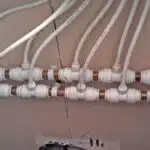
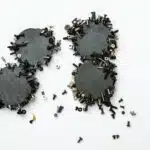
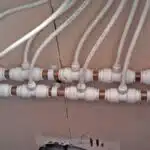





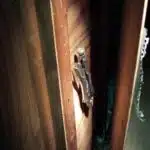


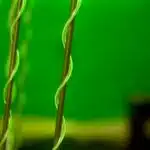

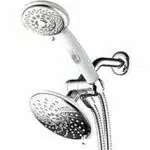

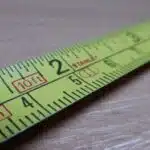



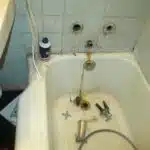
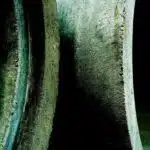


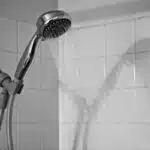

![How To Get Hair Out Of A Bathtub Drain 28 2/365 [Bathtub Drain]](https://green-life.blog/wp-content/uploads/2023/05/cOEu5edpkejq-150x150.jpg.webp)
